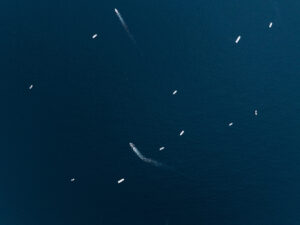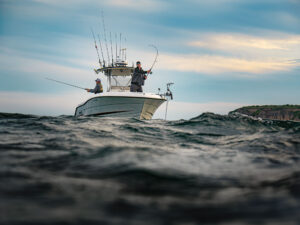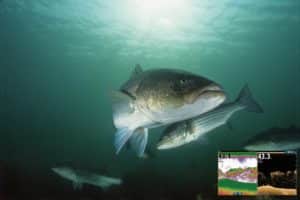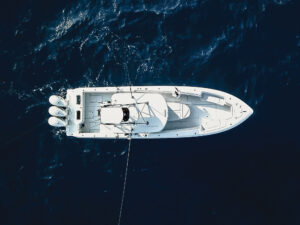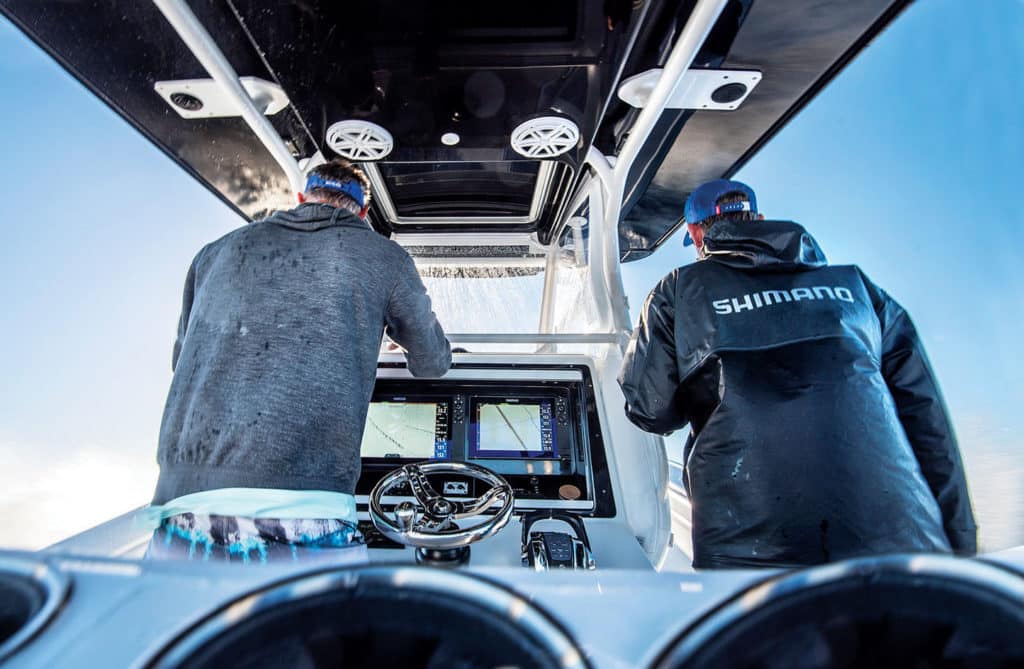
When I head offshore, I actually enjoy tinkering with the onboard electronics, exploring their capabilities, diving deep into the menus. My husband, not so much.
When it comes to using electronics, he wants to power up the multifunction display, and see a chart with GPS coordinates on the left and sonar with a depth reading and water temperature on the right. In truth, that’s pretty much all you need electronically for offshore fishing, save a fixed-mount, properly set up VHF radio.
In some coastal zones, radar is equally necessary because of frequent fog or other weather impediments. But for many anglers, radar is a “nice-to-have.”
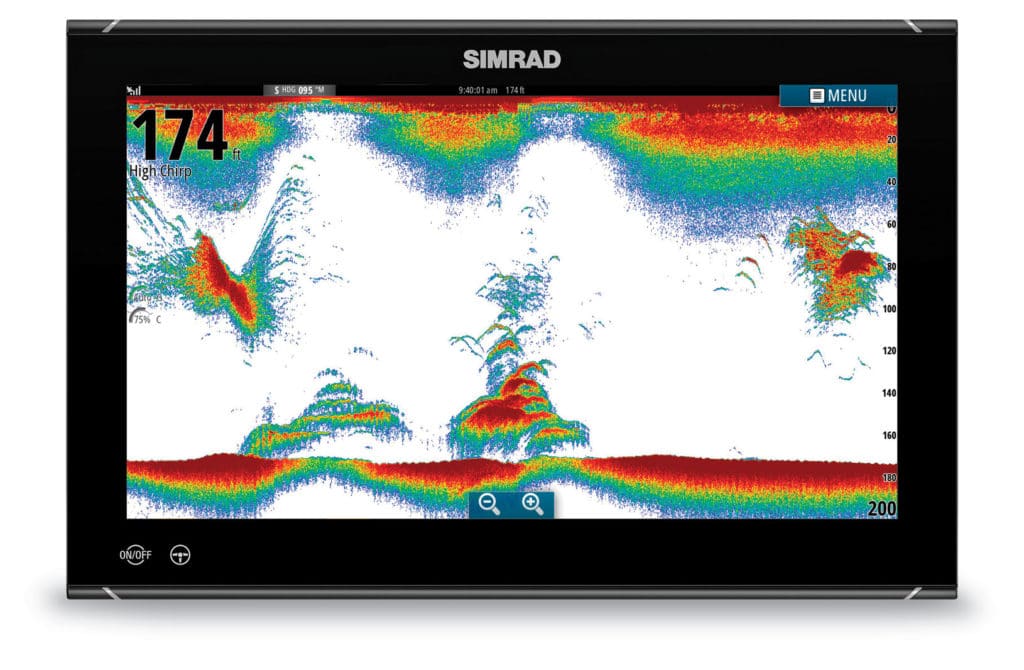
Sonar Setups
“Offshore, to me, means deep water,” says Raymarine/FLIR marketing manager Jim McGowan. “I’m thinking 500-plus feet deep.”
For sonar to provide detailed returns in such depths, it should be at least a 500-watt chirp system, if not 1 kW, he suggests. More-powerful units mark bottom at greater depths and support a much-wider array of transducers.
“The way technology has changed, a standard 50/200 kHz transducer has almost become an antiquated tool,” says Tom Zambetoglou, regional sales manager for Navico, which owns the Simrad and Lowrance brands. “Wide-beam technology has given the fisherman a broader view under the boat.”
Zambetoglou recommends a 1 kW Airmar B175HW high-wide transducer, which pairs with Simrad’s GO Series and evo3 multifunction displays—all feature internal 1 kW sounders. “The reason the B175HW is popular is it does a fantastic job inside 300 feet, fishing wrecks and trolling for bluefins and stripers, and when you’re offshore, it does a fabulous job in the upper water column, distinguishing bait [from] tuna.”
Garmin’s GPSMap series of multifunction displays best addresses offshore-fishing needs, says David Dunn, director of sales and marketing. Those units have up to 1 kW built-in chirp sonar, which covers most bases, he says.
The 8600 series, in particular, comes in a variety of screen sizes and can split its main window into six separate screens. Anglers can interact with each screen individually without affecting the others.
Dunn says his preference is to mount two separate MFDs side by side, and dial in one to sonar and the other to his charts with radar overlay. However, he says the trend is for anglers to purchase one large display.
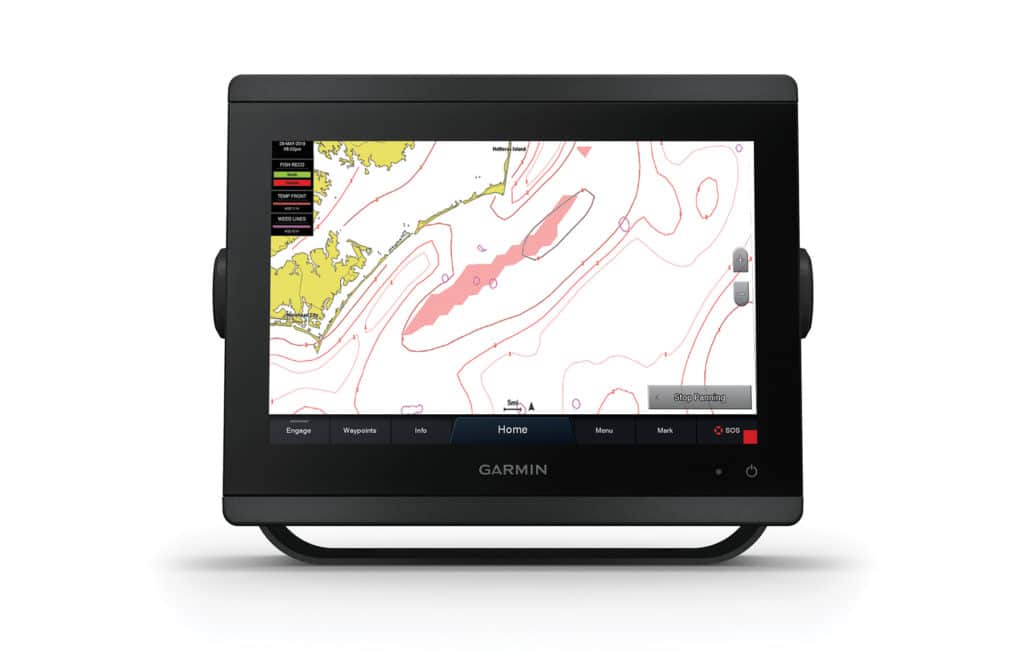
Underwater Road Maps
Zambetoglou stresses good cartography because what’s available today has become so user-definable. “You can target specific areas, and do color shading and contouring, and really define where you’re fishing,” he says, talking about the company’s C-Map products. “If you want to stay at 30 fathoms, you can color that line. The user interface will give you the ability to show that line in blue compared with green.”
In addition, live-mapping apps such as Raymarine’s RealBathy or Navionics’ SonarChart Live, let you build your own contours, McGowan says. “Plus modern charts are pre-populated with key wrecks, artificial reefs and local information.”
Garmin GPSMap units come preloaded with the company’s new g3 cartography; an upgrade to g3 Vision provides high-resolution relief shading. “It gives you the opportunity to see an uncharted bump or hump or crevice,” Dunn says. “But resolution shading is still in its infancy. Most of the available sites are in Florida right now. This will be a trend over the next two years.”
Safety Solutions
“In my humble opinion, nobody should go offshore without a fully functioning and set up VHF radio,” McGowan says. “I’m also shocked at how many boaters never activate the digital selective calling feature on their VHF.”
Offshore, the VHF is the only device other than an emergency beacon that can reliably summon help, and it is directly connected to those personnel equipped to assist boaters in emergencies.
All VHFs must, by law, be DSC-enabled; many also come with built-in GPS and often built-in AIS receivers. In many cases, the VHF can be easily networked with the boat’s MFD so all functions can be performed on one display.
“If it’s hooked up properly, the screen can walk you through what’s going on in an emergency. It gives you a script on the screen, and it gives you the actual coordinates of your position as well as putting the VHF into DSC mode and sending out a signal,” says Garmin’s Dunn.
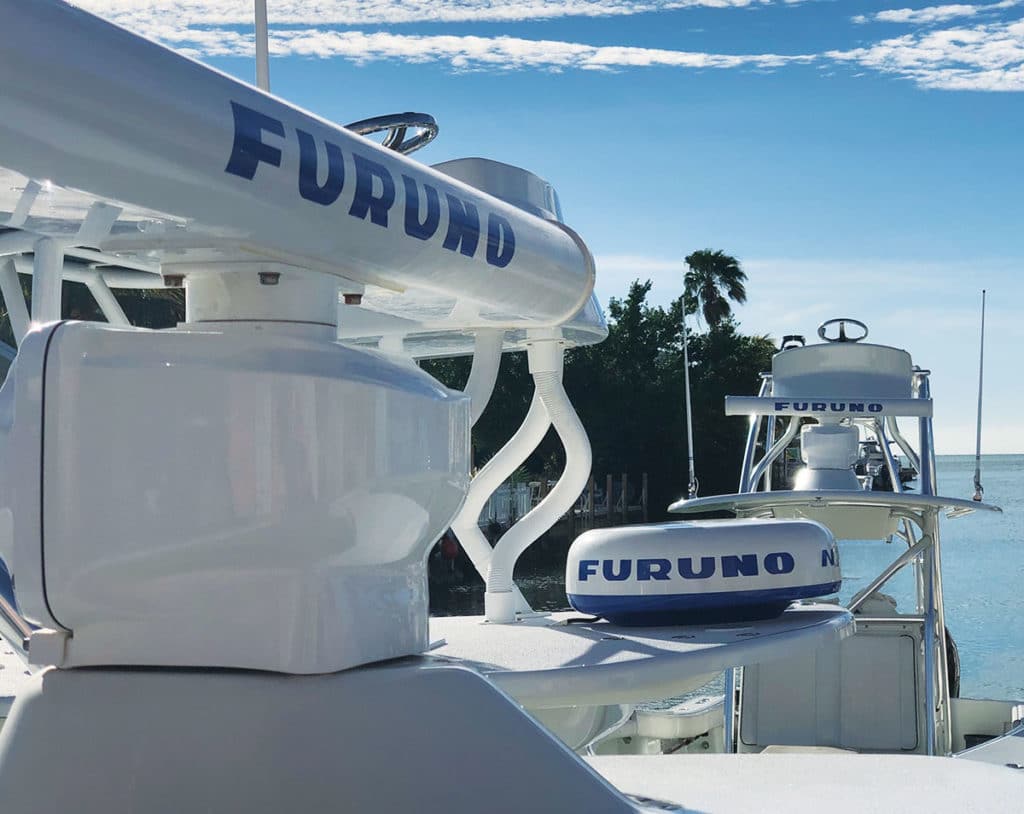
Bells and Whistles
“Radar is an obvious addition, and many times a necessity,” says Jeff Kauzlaric, Furuno advertising and communications manager. “The great thing about today’s radars is all the options. For example, Furuno offers both powerful magnetron radars with its X-Class series, which bring a lot of power for finding flocks of birds, and also solid-state NXT Doppler radars that excel with navigating, using their target-analyzer feature.”
Some of Raymarine’s pros swear their radar scanner is more important than their sonar for finding fish, McGowan says. But high-powered radar options do cost a pretty penny. “Some radomes are bird-mode equipped too,” he notes. “And they work just as well at slightly shorter ranges.” Furuno’s DFF3D multibeam sonar shows anglers what’s under the boat 120 degrees port to starboard in depths to about 900 feet. “You can determine which side of the boat the fish are on, and display 3D pictures of structure,” Kauzlaric says.
Garmin’s LiveScope doesn’t go quite as deep—200 feet—but it gives anglers a real-time look at what’s directly beneath them in a 135-degree cone angle. “If you’re bottomfishing, you can actually see fish swimming up and hitting the bait. If you’re trolling, you can see if there are tuna below,” Dunn says.
Read Next: Choose the Right Electronics for Inshore Fishing
SiriusXM weather is also another near necessity; it requires a subscription and a satellite antenna. In fact, Garmin and Sirius just announced a partnership, called Fish Mapping, with new features such as sea-surface temperature (updated every six hours), weed-line concentrations and plankton maps—available offshore, out of cell range—with Garmin’s new GXM 54 antenna.
Of course, thermal cameras, IP cameras, Raymarine augmented reality and engine-monitoring integration also belong on any offshore anglers’ wish list.
In my opinion, one can never have too many gadgets. It’s simply against my nature to be a minimalist. I’m queen of the nice-to-haves.

